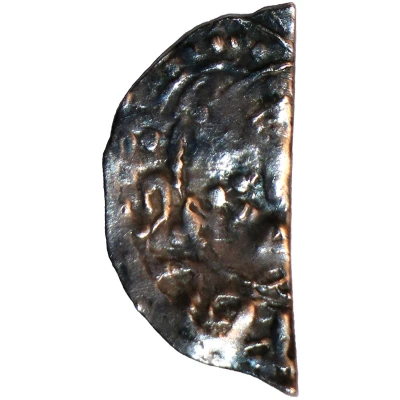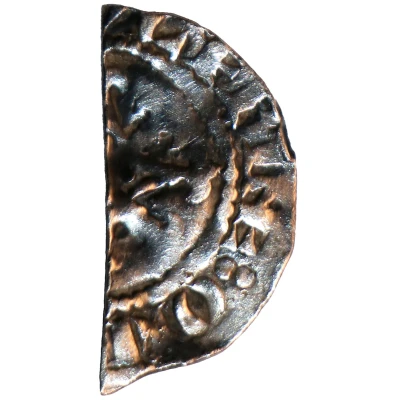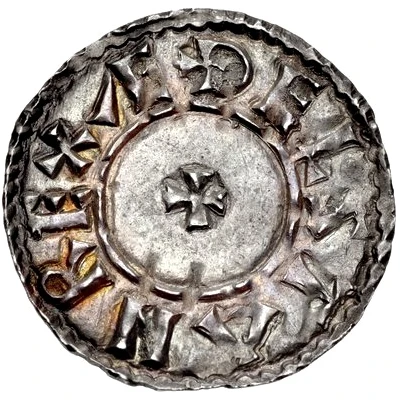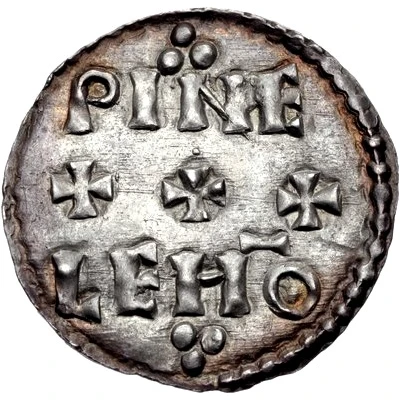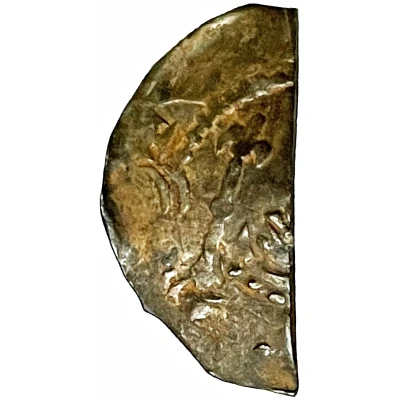
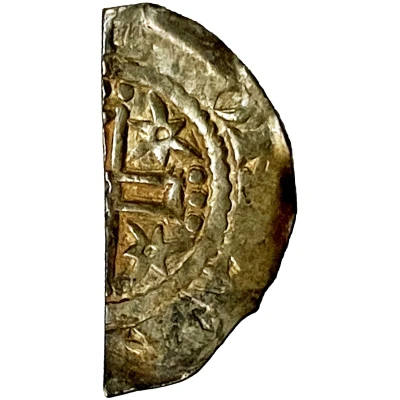

Halfpenny - Stephen Voided cross and stars type ND
| Silver | 0.7 g | 20 mm |
| Issuer | England (United Kingdom, British Overseas Territories and Crown Dependencies) |
|---|---|
| King | Stephen (1135-1154) |
| Type | Standard circulation coin |
| Years | 1145-1150 |
| Value | ½ Penny |
| Currency | Penny (924-1158) |
| Composition | Silver |
| Weight | 0.7 g |
| Diameter | 20 mm |
| Shape | Half circle |
| Technique | Hammered |
| Demonetized | Yes |
| Updated | 2024-10-08 |
| Numista | N#308307 |
|---|---|
| Rarity index | 97% |
Reverse
Voided cross and stars within inner circle, legend around.
Lettering: []:ON:LVN
Translation: (Moneyer's name) of London
Comment
Norman kings (1066-1154), Stephen (1135-54), Substantive royal issues, Cut halfpenny.BMC type 2: types 2 and 6 were struck in the east of England, which was under Stephen's control.
Moneyers of this type at London: Adam, Alisander/Alisandr(e), Edward, Gef(f)rei, Godard, Hamund/Hamundr, Iohan, Ro(d)bert, Rog(i)er, T(i)erri (D) and Wul(f)win(e).
Medieval coins were cut into halves and quarters to provide fractional denominations without the need to strike new coins. It is thought these were generally cut at the mint, although it is also likely to have happened during transactions. Cut halfpennies are known in England from Anglo-Saxon times (c. 750s) until Edward I introduced round farthings and halfpennies in 1279.
('A' suffix has been added to the Spink reference to differentiate from the full penny.)
Interesting fact
The Halfpenny coin was used in England during the reign of King Stephen, who ruled from 1135 to 1154. The coin features a voided cross and stars design, which was a common feature of coins during this period. The use of silver in the coin's minting was also significant, as it reflected the value of the coin and the wealth of the kingdom at the time. Despite its small size and value, the Halfpenny coin played an important role in the economy of medieval England, as it was widely used for everyday transactions and was an important symbol of the kingdom's prosperity.
